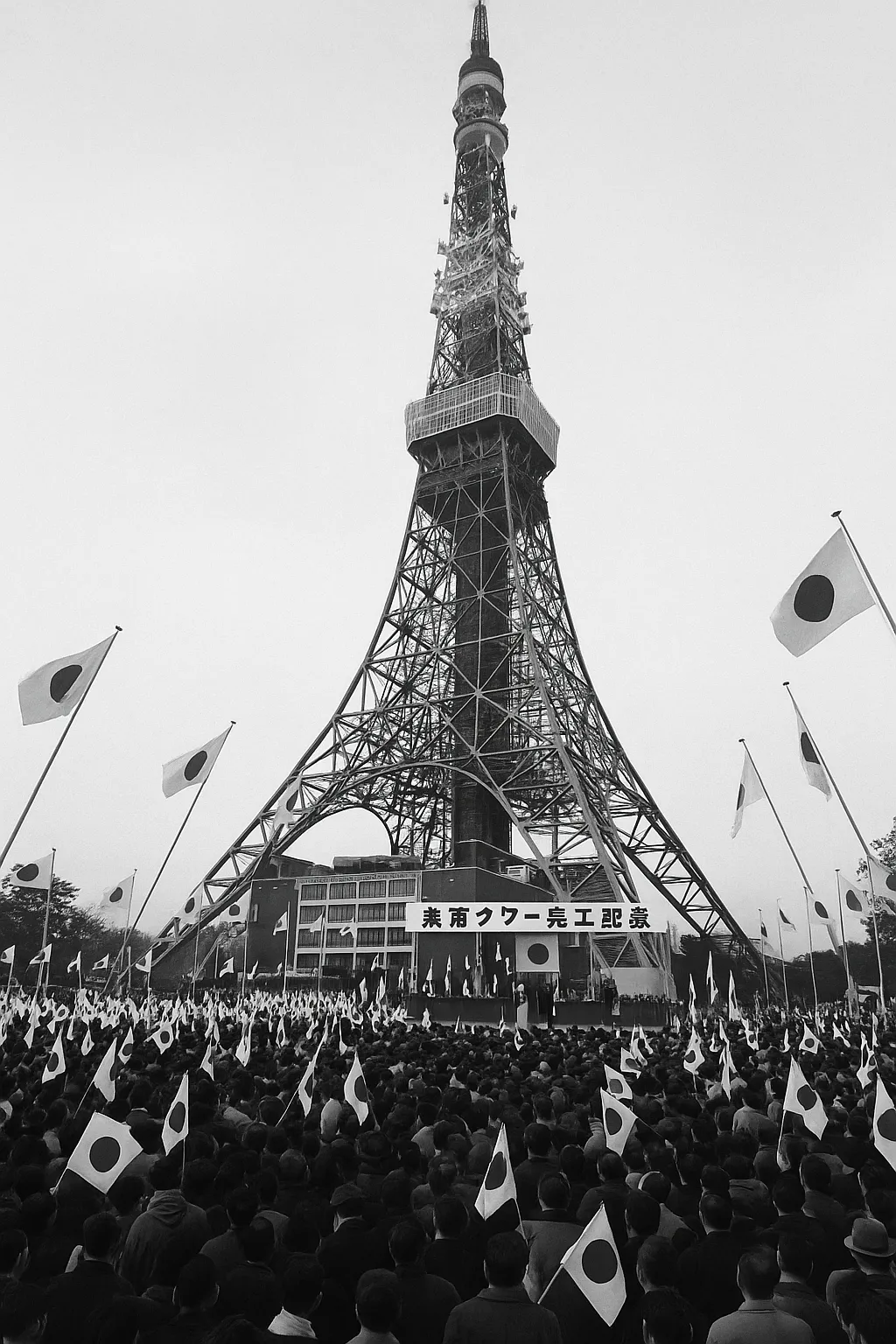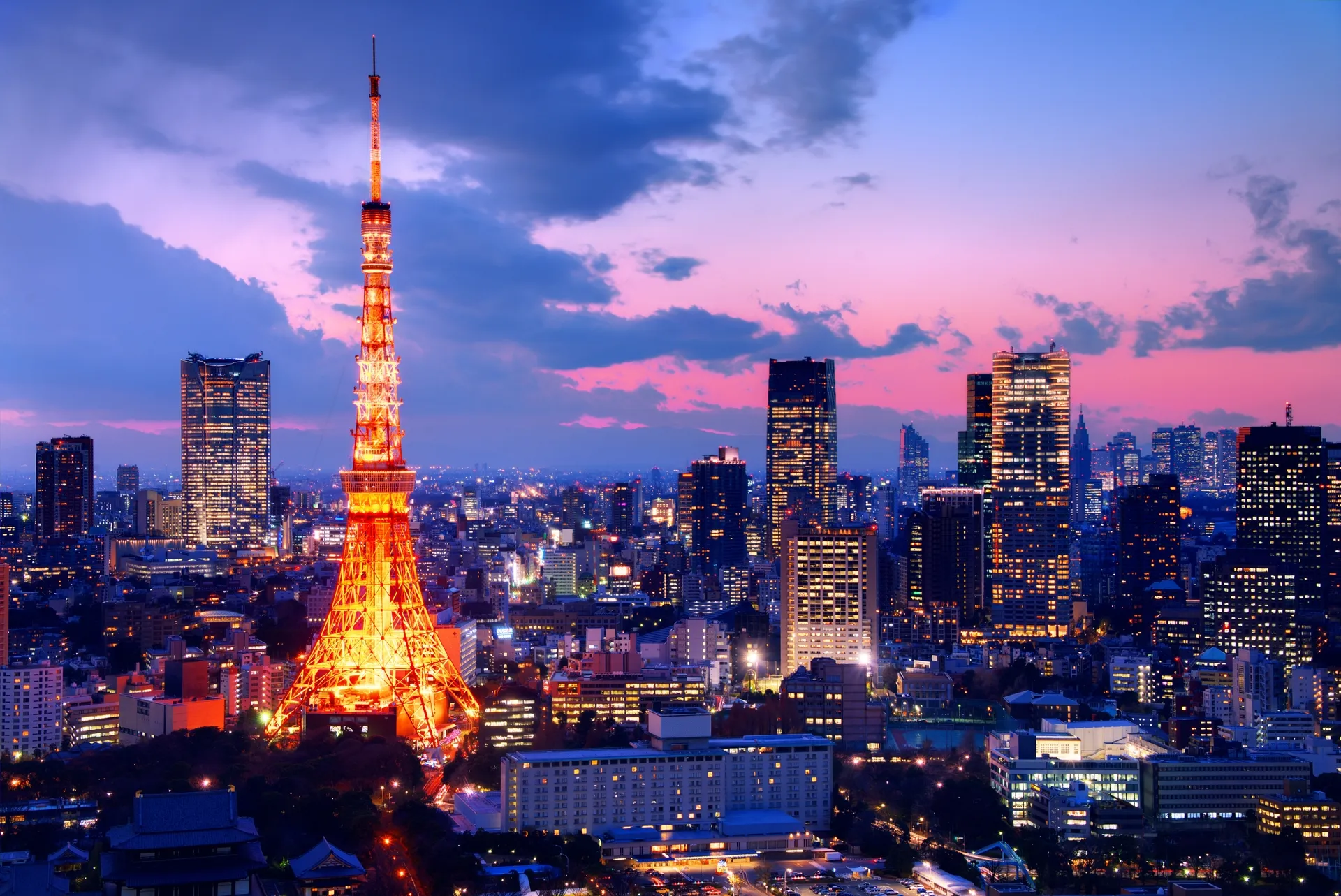Symbol of Post-War Recovery
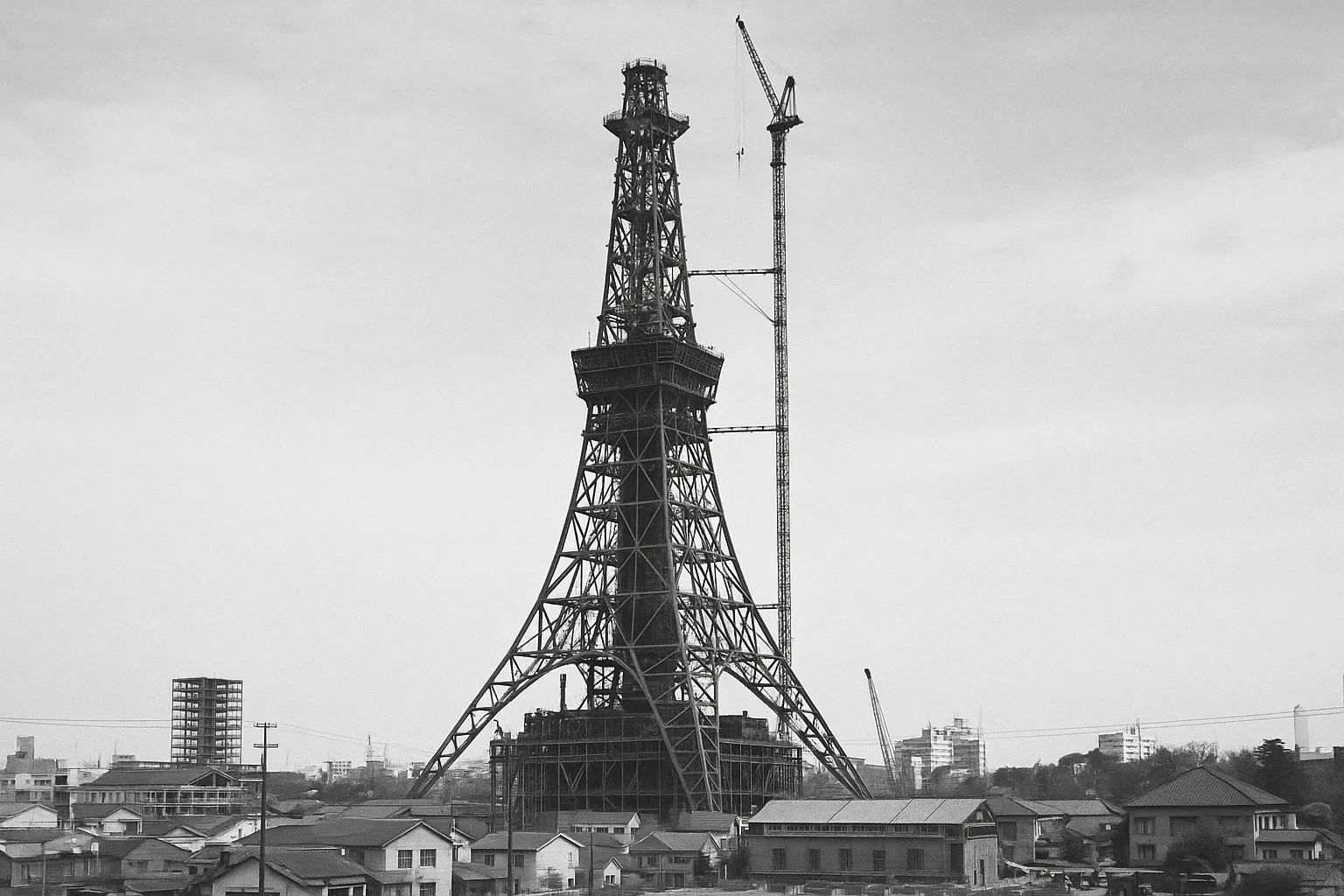
Tokyo Tower stands as one of the most powerful symbols of Japan's remarkable post-war recovery. Built between 1957 and 1958 during a period of rapid economic growth, it represented the nation's transformation from the devastation of World War II to a modern, technologically advanced society.
Designed by architect Tachū Naitō and inspired by the Eiffel Tower, Tokyo Tower actually surpasses its French predecessor in height, standing at 333 meters (1,093 feet) compared to the Eiffel Tower's 324 meters. More remarkably, it achieves this greater height while using 60% less steel—a testament to Japanese engineering innovation.
A Tower Born from Conflict
Perhaps the most poignant aspect of Tokyo Tower's history is that some of its steel came from recycled American military tanks left in Japan after the Korean War. This transformation of instruments of war into a beacon of peace and prosperity perfectly encapsulates Japan's post-war philosophy of renewal and forward progress.
Construction began in June
Completed in October, opened December 23
Record-breaking construction time
180M+ visitors since opening
The Architect: Tachū Naitō
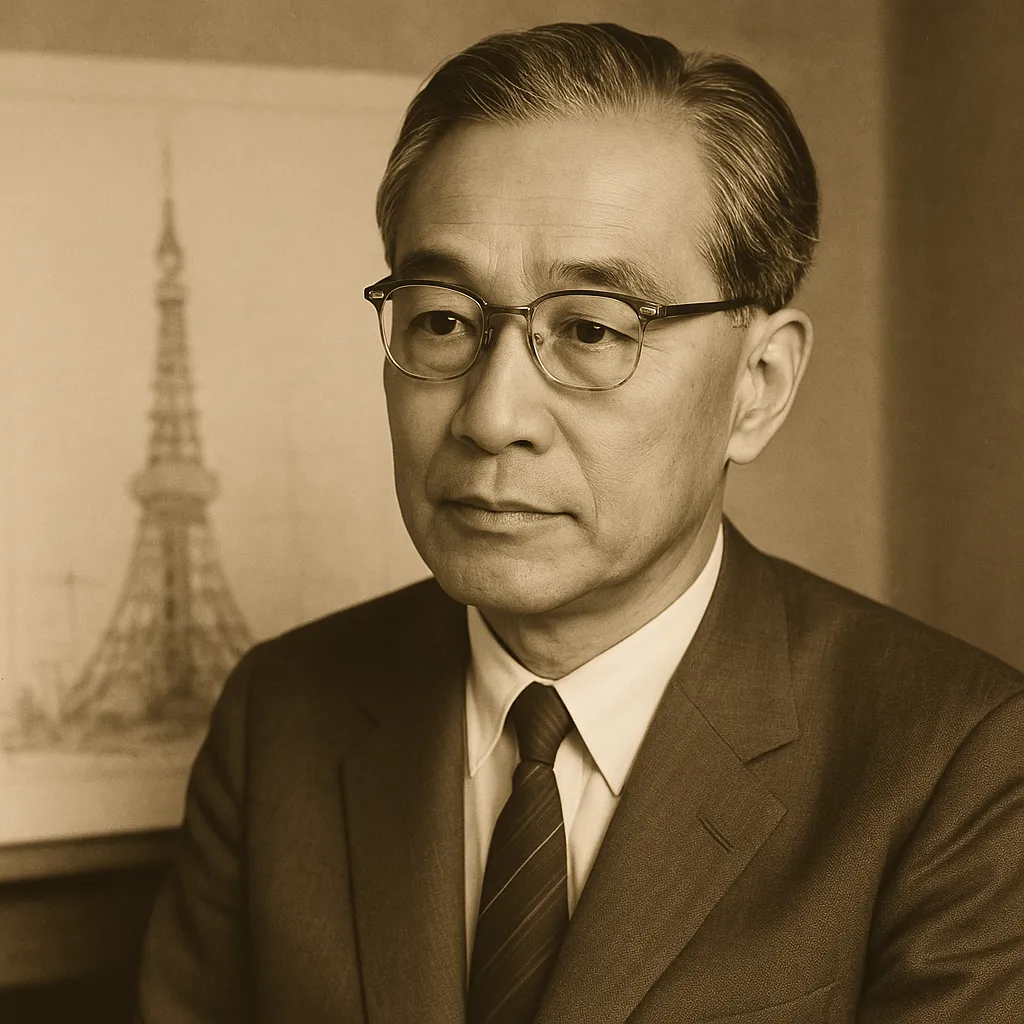
The "Father of Japanese Tower Design"
Tachū Naitō (1886-1970) was Japan's foremost structural engineer and is renowned for his earthquake-resistant designs. His innovative approach to tower construction revolutionized how tall structures could withstand Japan's frequent seismic activity.
Naitō's genius was in creating a design that was both taller and lighter than the Eiffel Tower while being specifically engineered to survive earthquakes. He developed a unique lattice structure that allows the tower to flex during seismic events without sustaining damage.
"A tower must not only stand tall, but must also dance with the earth when it trembles." — Tachū Naitō
Engineering Marvel
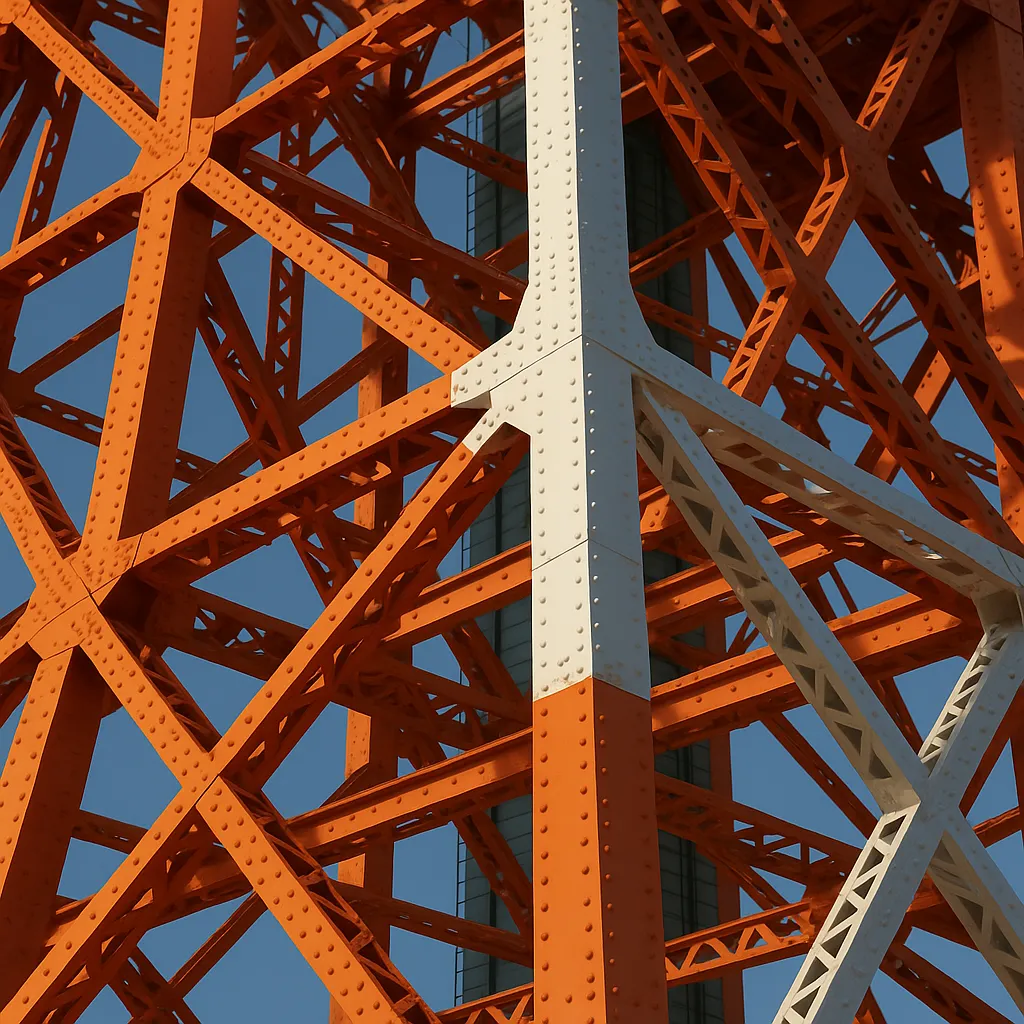
Tokyo Tower's engineering represents a remarkable achievement in structural design. The tower's distinctive orange and white color scheme isn't just aesthetic—it's mandated by Japanese aviation safety regulations for tall structures.
Material Efficiency
~4,000 tons of steel used in construction. By comparison, the Eiffel Tower required 7,300 tons despite being shorter. This 60% reduction in material while achieving greater height showcases revolutionary engineering.
Construction Speed
Just 18 months from groundbreaking to completion. This remarkable timeline was achieved through innovative construction techniques and round-the-clock work schedules, demonstrating Japan's determination to modernize rapidly.
Earthquake Resistance
Designed to withstand magnitude 8.0 earthquakes. The lattice structure allows controlled swaying—the tower can move up to 1 meter at its peak during strong winds or seismic activity without sustaining damage.
Maintenance Marvel
5-year repainting cycle requires 28,000 hours of labor. Skilled workers hand-paint the entire structure using 7 tons of paint. The last full renovation was completed in 2018, ensuring the tower remains pristine.
Broadcasting Technology
Original purpose: TV broadcasting. The tower began as a broadcast antenna for Tokyo's television stations. Even today, it continues to transmit analog signals alongside its role as a tourist attraction.
Foundation Depth
33 meters underground. The foundation extends deep into Tokyo's bedrock, providing stability for the 333-meter structure above. The symmetry (33m below, 333m above) was intentional.
Cultural Significance
Beyond its practical functions as a broadcast tower and observation deck, Tokyo Tower has become deeply embedded in Japanese popular culture. It has appeared in countless films, anime, manga, and television shows, often serving as a symbol of Tokyo itself.
Pop Culture Icon
- Film & TV: Featured prominently in Japanese cinema, from classic Godzilla films to modern dramas
- Anime & Manga: Appears in numerous series as a Tokyo landmark, including Sailor Moon, One Piece, and Detective Conan
- Literature: Referenced in novels and poetry as a symbol of modern Japan
- Photography: One of the most photographed landmarks in Japan, with Instagram tag count exceeding 2 million posts
Seasonal Celebrations
The tower's illumination changes to mark special occasions:
- Diamond Veil (White): Standard evening illumination, creating an elegant appearance
- Landmark Light (Orange): Warm lighting that evokes nostalgia
- Special Colors: Pink for breast cancer awareness, rainbow for Pride events, blue for autism awareness, and more
Visitor Milestone
Since opening in December 1958, Tokyo Tower has welcomed over 180 million visitors—more than Japan's entire population. It remains one of Tokyo's most visited paid attractions, drawing both domestic and international tourists year-round.
Tokyo Tower Today
While Tokyo Skytree, completed in 2012, has taken over Tokyo Tower's role as the primary broadcast tower, Tokyo Tower remains beloved by residents and visitors alike. Its central location in the Minato district, rich history, and iconic status ensure it continues to attract millions of visitors annually.
The tower has adapted to modern times while maintaining its historical character. Recent additions include:
- Top Deck Renovation (2018): A ¥3 billion renovation transformed the observation deck with modern amenities, interactive displays, and enhanced viewing experiences
- Digital Integration: AR experiences, virtual tours, and social media-friendly photo spots
- Event Hosting: Regular art exhibitions, concerts, seasonal festivals, and the popular annual stair-climbing race
- Sustainability Efforts: LED lighting reduces energy consumption while maintaining the tower's iconic glow
Tokyo Tower stands as living history—a structure that has witnessed and participated in Japan's transformation from post-war recovery to technological superpower. It reminds visitors that great achievements can rise from adversity, and that symbols of hope endure across generations.
Experience This Historic Landmark
Visit Tokyo Tower and become part of its ongoing story
Plan Your Visit